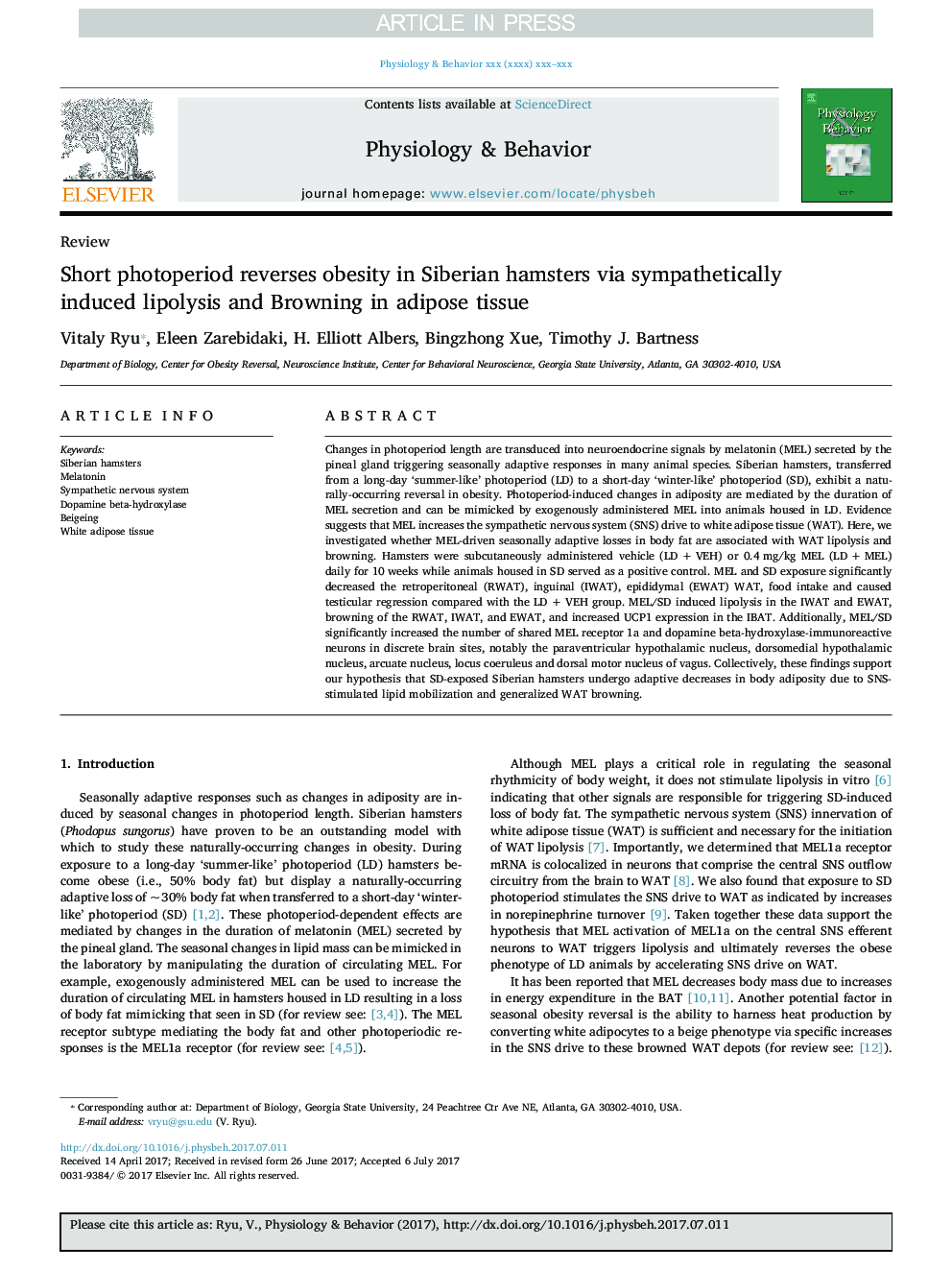| Article ID | Journal | Published Year | Pages | File Type |
|---|---|---|---|---|
| 8650521 | Physiology & Behavior | 2018 | 10 Pages |
Abstract
Changes in photoperiod length are transduced into neuroendocrine signals by melatonin (MEL) secreted by the pineal gland triggering seasonally adaptive responses in many animal species. Siberian hamsters, transferred from a long-day 'summer-like' photoperiod (LD) to a short-day 'winter-like' photoperiod (SD), exhibit a naturally-occurring reversal in obesity. Photoperiod-induced changes in adiposity are mediated by the duration of MEL secretion and can be mimicked by exogenously administered MEL into animals housed in LD. Evidence suggests that MEL increases the sympathetic nervous system (SNS) drive to white adipose tissue (WAT). Here, we investigated whether MEL-driven seasonally adaptive losses in body fat are associated with WAT lipolysis and browning. Hamsters were subcutaneously administered vehicle (LDÂ +Â VEH) or 0.4Â mg/kg MEL (LDÂ +Â MEL) daily for 10Â weeks while animals housed in SD served as a positive control. MEL and SD exposure significantly decreased the retroperitoneal (RWAT), inguinal (IWAT), epididymal (EWAT) WAT, food intake and caused testicular regression compared with the LDÂ +Â VEH group. MEL/SD induced lipolysis in the IWAT and EWAT, browning of the RWAT, IWAT, and EWAT, and increased UCP1 expression in the IBAT. Additionally, MEL/SD significantly increased the number of shared MEL receptor 1a and dopamine beta-hydroxylase-immunoreactive neurons in discrete brain sites, notably the paraventricular hypothalamic nucleus, dorsomedial hypothalamic nucleus, arcuate nucleus, locus coeruleus and dorsal motor nucleus of vagus. Collectively, these findings support our hypothesis that SD-exposed Siberian hamsters undergo adaptive decreases in body adiposity due to SNS-stimulated lipid mobilization and generalized WAT browning.
Keywords
Related Topics
Life Sciences
Biochemistry, Genetics and Molecular Biology
Physiology
Authors
Vitaly Ryu, Eleen Zarebidaki, H. Elliott Albers, Bingzhong Xue, Timothy J. Bartness,
